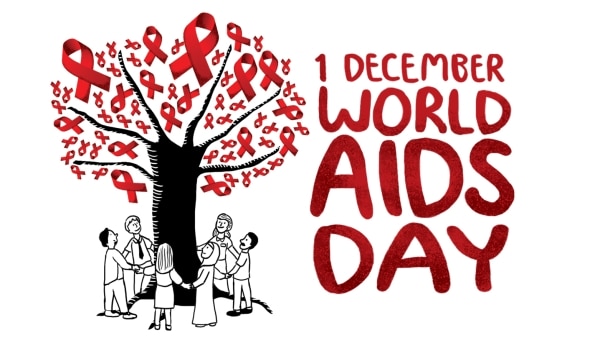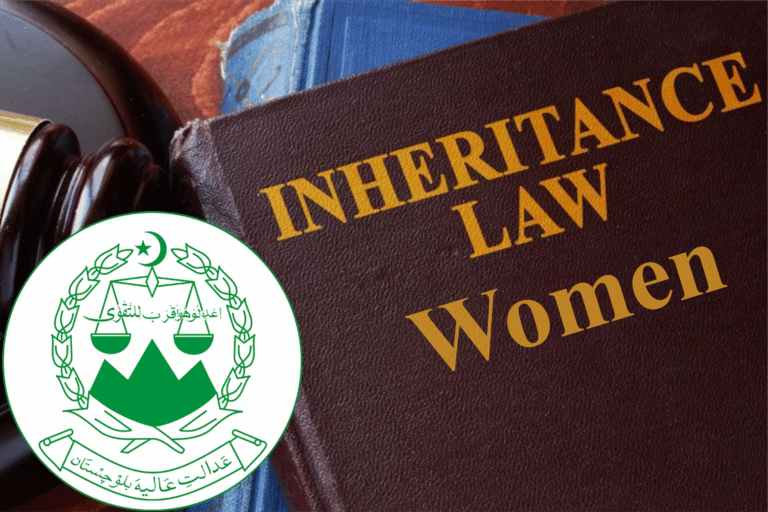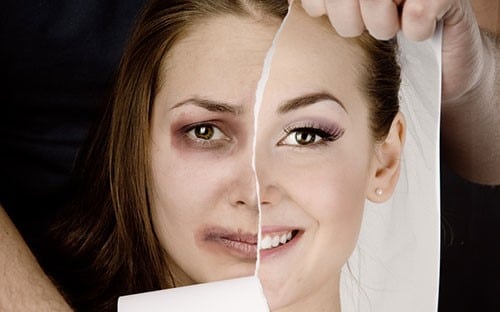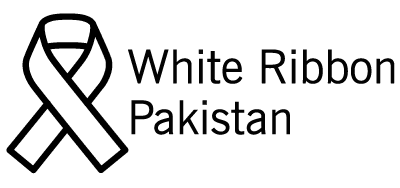
by admin | Oct 25, 2022 | Uncategorized
HIV affects millions of people worldwide every year and is a major public health concern. HIV aims and contaminates the CD4 cells in immune system of a person’s body which protects him/her from germs and illnesses. HIV causes AIDS by attacking the CD4 cells, which the defense system uses to protect the body from ailments. Lack of awareness on precautionary measures and limited access to healthcare facilities are a major contributor to increasingly HIV mortalities.
In 2020, 680,000 people died because of HIV related causes and 37,700,000 estimated number of people were found living with HIV. Moreover 1,500,000 people were newly infected with this virus in the same year. World AIDS Day is observed every year on 1st December since 1988. This day is well thought-out as an opportunity for people worldwide to unite in the fight against HIV, to show support for people living with HIV, and to remember those who have died from an AIDS-related illness.
On the occasion of World AIDS Day, we must not forget that with our support and love, we can help many patients with AIDS feel a lot better. They are already suffering from AIDS, don’t make them suffer with your behavior. As long as it’s about HIV, hate the disease but not the diseased. Spread awareness, not ignorance. Together we must work hard to put an end to this disease and have a beautiful tomorrow.

by admin | Oct 25, 2022 | Uncategorized
The COVID 19 pandemic has brought unprecedented challenges for everyone, but particularly has intensified them for women living with abusive family members. In Punjab alone, two emergency helplines, PUCAR-15 and PSCA-A5, have recorded a dramatic rise in reports since the beginning of the pandemic, with PUCAR-15 reporting a staggering 25% increase. Unfortunately, while the number of reported cases may be on the rise, help available for victims is diminishing.
Pakistan is not alone in witnessing this alarming increase in domestic violence over the past year. In the UK, calls to the national abuse hotline escalated by 65%, while in China, reports of domestic violence cases to the local police tripled last year. Similar trends were witnessed in the Eastern Mediterranean Region, with many countries reporting increases of over 50%. Rozan, an organization supporting women’s rights, reported that mandatory quarantines resulting in restricted movement have become an added stressor for those facing pre-existing limitations on space. These have forced families to spend more time together, an environment in which stress can intensify. Economic and health-related uncertainty caused by the pandemic, such as increased unemployment and reduced access to hospitals, are further stressors behind abusers’ increased hostility towards their partners.
Suffice it to say, the COVID pandemic has contributed towards a deplorable pandemic of domestic violence. As the world’s attention is focused on developing vaccines to stem the spread of COVID-19, let us resolve to fight domestic violence. In the short term, we must encourage victims to reach out to community resources such as help-centers and helplines. According to multiple reports from women, such shelters have provided the monetary, legal, and rehabilitative help needed to escape their abusive circumstances. In addition to Rozan, there are many domestic violence centers and helplines victims in Pakistan can turn to; local domestic violence helplines include 1099 and 1043. Shelters include the Panah Shelter in Karachi, Dar-ul-Aman shelter in Lahore and the Shaheed Benazir Bhutto Center in Islamabad.
Individuals can pursue legislative action through collectivizing and demanding implementation of restorative justice mechanisms: legislative mechanisms that aim the focus of the court’s power on helping the victims. All parties involved in the complaint converge on the resolution that most effectively provides the victim with closure and empowerment, centering their needs. A study conducted in Salt Lake City, Utah in which abusers were assigned either into a traditional batterer intervention program or a hybrid traditional-plus-restorative justice program, indicated that participants from the hybrid program showed a 52% decline in the severity of new crimes over a two-year period.
Another course of action can be implemented through the healthcare sector: training of healthcare professionals on intimate partner violence so they can build their expertise, and subsequently undertake screening – a means of identifying victims of domestic violence. Such professionals can also advocate for greater psychological and legal support for victims. A greater emphasis needs to be placed on medico-legal departments, those in which the fields of medicine and law converge, in public hospitals in Pakistan. Such departments can help victims by providing other healthcare workers with guidance and knowledge on effective management of domestic violence victims.
We have resolved to win the fight against COVID-19. Let us also resolve to win the fight against domestic violence.

by admin | Oct 25, 2022 | Uncategorized
The Balochistan High Court has ordered the government to assist women in obtaining their share of the inheritance.
Advocate Muhammad Sajid Tarin filed a petition in the court against women being deprived of their share in inheritance, especially property.
“In most cases, whenever a settlement is made for inherited property, women are conveniently ignored or sidelined from the process,” he said.
A two-member bench, comprising Chief Justice Jamal Khan Mandokhail and Justice Muhammad Kamran Khan, remarked that under Section 498 A of the Pakistan Penal Code, anyone depriving women of their rightful share of inheritance shall be punished.
The law states: “Whoever by deceitful or illegal means deprives any woman from inheriting any movable or immovable property at the time of opening of succession shall be punished with imprisonment for either description for a term which may extend to ten years but not be less than five years or with a fine of one million rupees or both”.
The judges remarked that the government should take the responsibility of ensuring women receive their rightful share.
“The government should also run electronic and digital campaigns creating awareness over the issue, especially among women,” the court said, adding that the law should be taught in schools and colleges as well.
The Director-General of NADRA has been directed to establish a special desk at the revenue office of the relevant district/tehsil for provision of the family tree of the deceased, whose property is either likely to be inherited or settled during the settlement operation to ensure inclusion of names of female legal heirs of the deceased.
The Board of Revenue officials have also been directed to establish a complaint cell at the revenue offices to avoid any unnecessary delay in the process of inheritance and settlement operation and also to eradicate the possibility of illegal gratification.
Chief Justice Mandokhail observed, “Right of female legal heirs have been protected by the Holy Quran and Sunnah, thus, any custom or tradition (Rawaj) contrary to the Holy Quran should not be followed, while recording mutation of inheritance and during the settlement proceedings”.

by admin | Oct 25, 2022 | Uncategorized
New studies have revealed that domestic violence against women in Pakistan has increased. A recent study revealed that up to 84% of women participants have been psychologically abused by their husbands in their lifetime, while 77% and 80% of women in other studies have confirmed that they were targets of sexual and physical violence, respectively. Moreover, according to media reports, more than 51,241 cases of violence against women were reported between January 2011 and June 2017. Conviction rates, meanwhile, remain low, with the accused in just 2.5% of all reported cases ending up being convicted by the courts. It is important to note that these statistics provide moderate estimates of violence prevalence in Pakistan, as women are hesitant to share sensitive information about their marital lives in the patriarchal society of Pakistan. Above all, Pakistan ranks fourth on the list of the world’s most dangerous countries for women. Furthermore, another report shows a 73 percent drop in the cases of violence was witnessed during February but a spike of up to 360 percent was witnessed during March 2020.
In a majority of cases of sexual violence, a perpetrator is a man known to the woman or the child victim. So, Violence against women is more structural than causal in this society. Rape, one of the biggest violations of human rights. Day by day, the number of rape cases are increasing, which itself is one of the biggest violation of human rights. On top of this, the brutality of the act is also getting more and more horrendous. In many cases, videos of rape victims are used to blackmail them to file a case against the perpetrators. Mostly in cases of domestic violence and assault, police adopt an accusatory approach towards the complainants and asked women to ‘prove their innocence before registering the offense (committed) against them.
Violence in any society is detrimental. It takes ages to get rid of it. In this regard, the chief justice of Pakistan has recently announced that 1,000 courts would be set up to deal with the cases of violence against women. Pakistan reported 2,297 cases of violence against women from 25 districts between January and December 2020. Awareness needs to be raised via electronic means. Throughout the country, funding for round-the-clock hotlines and shelters must be provided, with rapid testing facilities and appropriate World Health Organization health protocols. Basic safety planning and escape plans for extreme situations must be discussed. Protecting our women is the first step toward establishing a state like Madina.
by admin | Oct 22, 2022 | Uncategorized
Suicide is a major public health concern worldwide. Annually, more than 10 million individuals attempt suicide, of which one million die. The majority of suicide cases (79%) occur in low and middle-income countries. Multiple studies have shown that domestic violence survivors have higher rates of suicidal thoughts. Moreover, physical assault increases the risk of suicidal attempts in married women, the impact of emotional violence, including the infidelity of husband, jealousy of husband, threats to divorce, threats to physical assaults, being isolated from family members and, control and coercion of husband on suicidal attempts is greater than physical assault.
Female victims with a chronic illness or disability who experience intimate partner violence have an increased risk of threatening or attempting suicide. Women who undergo such abuse (particularly sexual) may exhibit suicidal ideation. Suffering humiliation, ridicule, or neglect can deplete self-worth and further drive social isolation. Such victimization runs counter to the need to belong and feel valued. When this goes unmet, a passive desire for death may arise. In addition to this, Moderate suicidal ideation may arise as individuals continue to experience both psychological pain, hopelessness, loss of connectedness with other people, social roles, interests, and sense of meaning in life, as well as a continued feeling of burdensomeness.
Suicide risk among those reporting domestic violence also may be linked to when this abuse finally comes to light. Few victims report their initial domestic victimization, with most not doing so until they have endured multiple assaults. Therefore, any report probably indicates a word-long history of violence. Also, this suggests that law enforcement officers may be the first responders to encounter victims with high suicide risk.
Even though, in Pakistan, suicide rates are lower than in the west. Nevertheless, it leads to spiritual death instead. This leads to the victims losing the taste of life and just surviving while suffering. Violence against women is multi-dimensional and its definition varies based on ethical, cultural, and legal factors. Delay in the detection of domestic violence imposes serious threats to women’s life. To reduce the burden of suicide in women, families, and society, it is important that violence against women is taken seriously and addressed at both individual and system levels.
Considering the crucial role women play in the construction of a society and a nation, such consequences are alarming. As a nation, we should try to help any such victim in our surroundings because help is easier than compensating for the loss of some valuable life either physically or spiritually. After all, suicide is not a solution. This is not how this centuries’ long tyranny of males can end, it can only be put to a halt by standing against it and fighting it.




